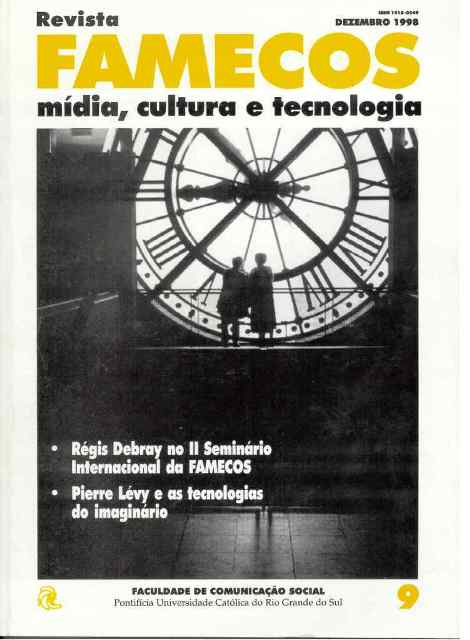Interaction interfaces: from potentiality to virtuality
DOI:
https://doi.org/10.15448/1980-3729.1998.9.3012Keywords:
Communication, Interactivity, educationAbstract
There is a great discussion (and why not confusion) about the concept of interactivity. Such a debate deserves special attention from researchers and practitioners who are concerned with educational programs. The precise definition of the concept is of fundamental importance since it guides the construction of interfaces.Downloads
References
DELEUZE, Gilles. Diferença e repetição. Rio de Janeiro: Graal,
FISHER, B. A. The pragmatic perspective of human communication:
a view from system theory. In: F.E.X. DANCE (Ed.), Human communication theory. New York: Harper & Row, 1982. p. 192-219.
FISHER, B. A. Interpersonal communication: pragmatics of human relationships. New York: Random House, 1987.
LASSWELL, H. D. The structure and function of com-munication
in society. In: W. SCHRAM & D. F. ROBERTS (Eds.). The process and effects of communication. Urbana, IL: University of Illinois, 1971. p.85-99.
LEVY, Pierre. Educação e Cybercultura: A nova relação com o saber. In: Cybercultura. Editora Odile Jacob. Tradução de Bruno Magne. França, 1998. Disponível em : http://empresa.portoweb.com.br/pierrelevy/educaecyber.html
______. Que é o virtual? São Paulo: 34, 1996.
______. As tecnologias da inteligência: o futuro do pensamento na era da informática. São Paulo: 34, 1993.
MACHADO, Arlindo. A arte do vídeo. São Paulo: Brasiliense, 1990.
______. Máquina e imaginário. São Paulo: Edusp, 1993.
SHANNON, C. & WEAVER, W. The mathematical theory communi-cation.
Urbana, IL: University of Illinois, 1962.
Downloads
Published
How to Cite
Issue
Section
License
Copyright
The submission of originals to Revista Famecos implies the transfer by the authors of the right for publication. Authors retain copyright and grant the journal right of first publication. If the authors wish to include the same data into another publication, they must cite Revista Famecos as the site of original publication.
Creative Commons License
Except where otherwise specified, material published in this journal is licensed under a Creative Commons Attribution 4.0 International license, which allows unrestricted use, distribution and reproduction in any medium, provided the original publication is correctly cited.






